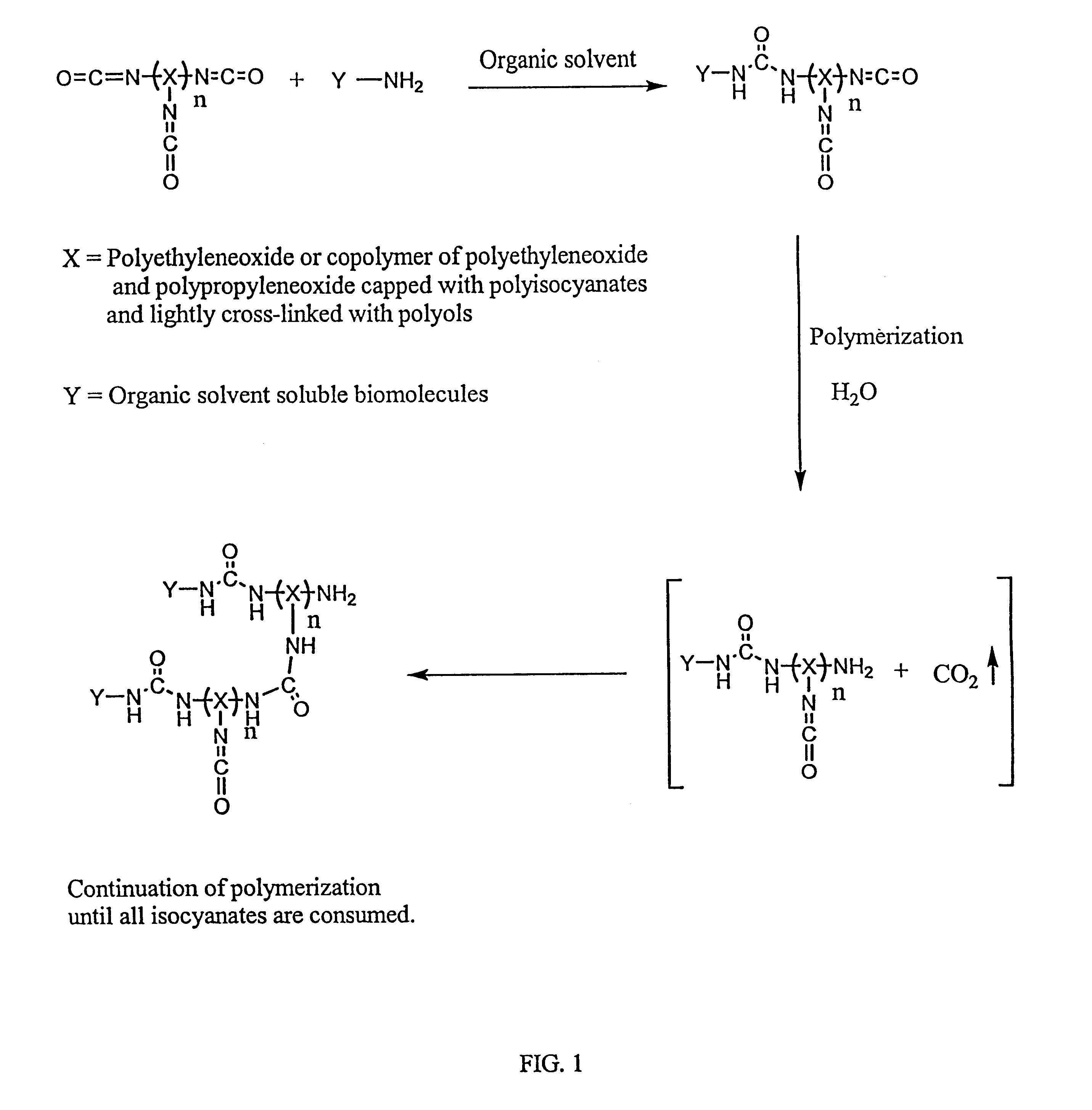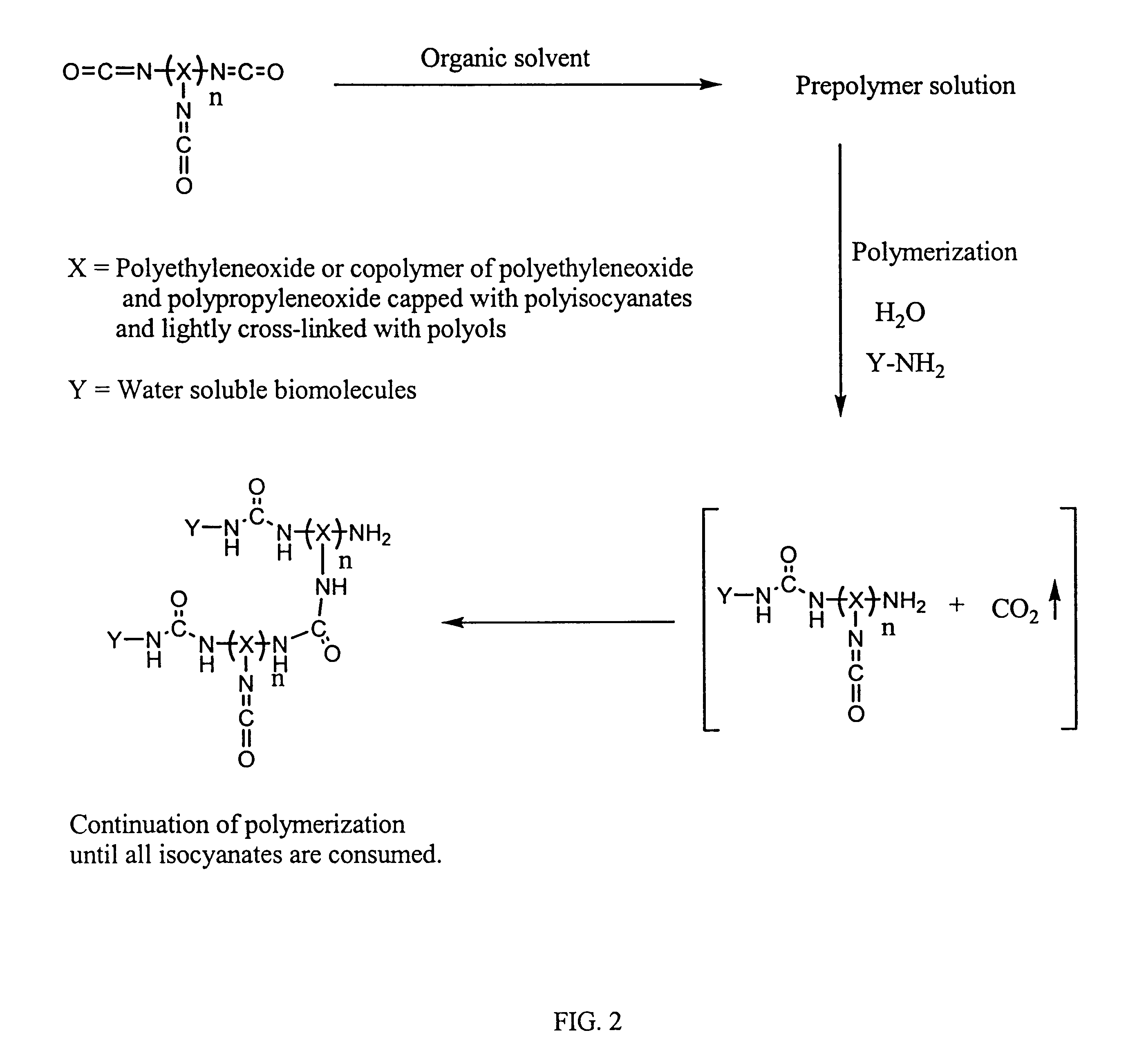Method of making biochips and the biochips resulting therefrom
a biochip and biochip technology, applied in the field of biochips and the biochips resulting therefrom, can solve the problems of low sensitivity biochips, high cost, and difficult time-consuming, and achieve the effects of improving sensitivity, simple method, and improving stability
- Summary
- Abstract
- Description
- Claims
- Application Information
AI Technical Summary
Benefits of technology
Problems solved by technology
Method used
Image
Examples
example ii
Hybridization Experiment with a DNA Chip
A solution of 0.025 g polyurethane prepolymer having an isocyanate content of about 0.5 meq / g (Hypol PreMa G-50 manufactured by Hampshire Chemical Corporation) was prepared in 0.15 g acetonitrile. Next, a solution of 1 mg DNA (0.3 .mu.M), having a hexane diamine at its 5' end and having the sequence NH.sub.2 --(CH.sub.2).sub.6 -NH.sub.2 -CATTGCTCAAAC-CO.sub.2 H, in 0.32 g of a 50 mM NaHCO.sub.3 aqueous buffer at pH 9.15 was prepared. The DNA solution was added to the prepolymer solution and thoroughly mixed. A droplet of the resulting solution was manually spotted on a silanated glass slide using a capillary microtube. As a negative control, a hydrogel droplet containing no DNA was spotted next to the DNA-containing hydrogel droplet.
The glass slide, having the hydrogel droplets thereon, was submersed into washing buffer (10 mM sodium phosphate buffer with 0.5 M NaCl and 0.1% SDS at pH 7.0) for 30 minutes to remove organic solvents and block ac...
PUM
| Property | Measurement | Unit |
|---|---|---|
| Fraction | aaaaa | aaaaa |
| Fraction | aaaaa | aaaaa |
| Fraction | aaaaa | aaaaa |
Abstract
Description
Claims
Application Information
 Login to View More
Login to View More - R&D
- Intellectual Property
- Life Sciences
- Materials
- Tech Scout
- Unparalleled Data Quality
- Higher Quality Content
- 60% Fewer Hallucinations
Browse by: Latest US Patents, China's latest patents, Technical Efficacy Thesaurus, Application Domain, Technology Topic, Popular Technical Reports.
© 2025 PatSnap. All rights reserved.Legal|Privacy policy|Modern Slavery Act Transparency Statement|Sitemap|About US| Contact US: help@patsnap.com



